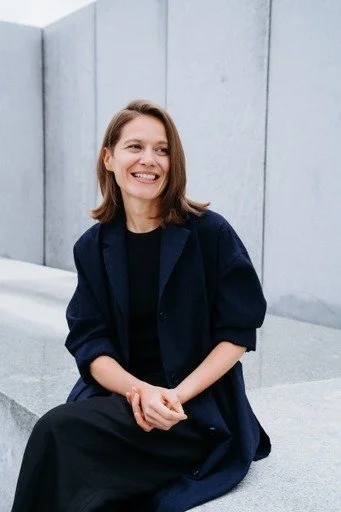Kamilla Csegzi is an architect and designer leading her eponymous studio based in NYC, investigating the dynamic interface between natural and artificial systems, with a focus on living materials as co-creators.
Working across the scales of architecture, installations and objects, Kamilla's creative process is instigated by the power of the surrounding material and natural world to articulate rituals, movement, behavior, gestures and relationships. To harness this symbiosis, her design engages natural processes like movement of air, growth, sedimentation, evaporation, vitrification, or the decay and transformations of material waste. In the more recent years, her focus has been on research and design with biomaterials, more specifically mycelium, the intricate network of thread-like structures found in fungi, that possesses a remarkable ability to transform and adapt. By harnessing the regenerative potential of mycelium, she aims to create pieces that undergo transformation, reflecting the dynamic and positive change from decay to growth.
Instead of being the form-giver to an object or the follower of a function, her craft gives up part of the control to co-create with nature. The result are pieces with structural integrity while also possessing a living essence, blurring the boundary between living and non-living things.
Kamilla studied Architecture and Urban Design in Bucharest and Paris, and earned her Master’s in Advanced Architectural Design from Columbia University GSAPP in 2015. She was awarded the William Ware and Saul Kaplan Fellowship for Excellence in Design and invited to contribute to the Oslo Architecture Triennale’s ‘After Belonging’ exhibition. Her professional journey has taken her across Paris, Beijing, Hong Kong, Singapore, and New York City.
As a practicing architect in various architecture studios in NYC, Kamilla has collaborated with institutions such as The Met, the American Museum of Natural History, the New Museum, Storefront for Art and Architecture, and Columbia University. She was part of the GSAPP Incubator at the New Museum’s New Inc. in 2018, where she started to deepen her engagement with experimental and research-based design.
In recent years, Kamilla founded her own studio, focusing on material innovation through bio-design at various scales. She has exhibited at shows like Wanted Design Manhattan Launch Pad (2023), Collectible NYC, Alcova Milano, Crossroads, and Shifting Matter (2024), as well as part of multiple curated exhibits at Zarolat Gallery in Dumbo NYC, where she highlights the evolving relationship between natural and artificial systems.
These experiments with materials enrich her approach to projects at the scale of architecture, allowing her to see buildings not as static objects but as adaptive, living systems that respond to context, climate, and human experience.
